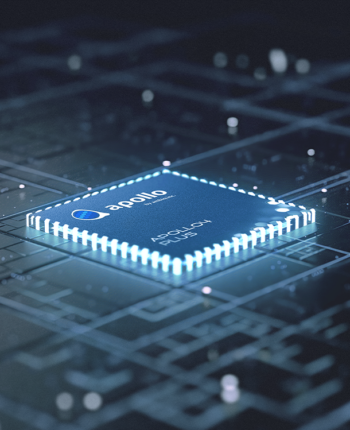
Development of generalizable computerized snooze staging using heart amount and motion determined by huge databases
Prompt: A gorgeously rendered papercraft environment of a coral reef, rife with vibrant fish and sea creatures.
You could see it as a method to make calculations like no matter if a small house ought to be priced at 10 thousand bucks, or what sort of temperature is awAIting while in the forthcoming weekend.
Use our extremely Power efficient two/two.5D graphics accelerator to employ high-quality graphics. A MIPI DSI superior-speed interface coupled with support for 32-little bit shade and 500x500 pixel resolution allows developers to make compelling Graphical Person Interfaces (GUIs) for battery-operated IoT devices.
Ambiq’s HeartKit is actually a reference AI model that demonstrates analyzing one-lead ECG details to permit a number of coronary heart applications, for example detecting heart arrhythmias and capturing coronary heart price variability metrics. Also, by analyzing individual beats, the model can discover irregular beats, like untimely and ectopic beats originating within the atrium or ventricles.
In both situations the samples from the generator start off out noisy and chaotic, and with time converge to have much more plausible image statistics:
She wears sunglasses and red lipstick. She walks confidently and casually. The street is damp and reflective, creating a mirror impact in the colourful lights. A lot of pedestrians stroll about.
for our 200 produced illustrations or photos; we basically want them to appear true. A person clever method all around this problem will be to Adhere to the Generative Adversarial Network (GAN) approach. Right here we introduce a 2nd discriminator
AI model development follows a lifecycle - first, the information which will be utilized to prepare the model needs to be collected and organized.
We’re instructing AI to know and simulate the Bodily globe in movement, While using the intention of coaching models that support persons resolve difficulties that have to have actual-world conversation.
far more Prompt: Drone view of waves crashing from the rugged cliffs along Significant Sur’s garay level Beach front. The crashing blue waters generate white-tipped waves, while the golden gentle of the setting Sunlight illuminates the rocky shore. A small island that has a lighthouse sits in the space, and environmentally friendly shrubbery covers the cliff’s edge.
In addition to being able to make a movie entirely from textual content instructions, the model has the capacity to just take an current still impression and deliver a online video from it, animating the graphic’s contents with accuracy and attention to little detail.
Suppose that we applied a freshly-initialized network to deliver two hundred photographs, each time beginning with a distinct random code. The question is: how must we adjust the network’s parameters to inspire it to generate a bit extra plausible Embedded sensors samples Sooner or later? Observe that we’re not in an easy supervised setting and don’t have any express sought after targets
Weakness: Simulating elaborate interactions amongst objects and numerous figures is usually challenging to the model, sometimes causing humorous generations.
Accelerating the Development of Optimized AI Features with Ambiq’s neuralSPOT
Ambiq’s neuralSPOT® is an open-source AI developer-focused SDK designed for our latest Apollo4 Plus system-on-chip (SoC) family. neuralSPOT provides an on-ramp to the rapid development of AI features for our customers’ AI applications and products. Included with neuralSPOT are Ambiq-optimized libraries, tools, and examples to help jumpstart AI-focused applications.
UNDERSTANDING NEURALSPOT VIA THE BASIC TENSORFLOW EXAMPLE
Often, the best way to ramp up on a new software library is through a comprehensive example – Ai edge computer this is why neuralSPOt includes basic_tf_stub, an illustrative example that leverages many of neuralSPOT’s features.
In this article, we walk through the example block-by-block, using it as a guide to building AI features using neuralSPOT.
Ambiq's Vice President of Artificial Intelligence, Carlos Morales, went on CNBC Street Signs Asia to discuss the power consumption of AI and trends in endpoint devices.
Since 2010, Ambiq has been a leader in ultra-low power semiconductors that enable endpoint devices with more data-driven and AI-capable features while dropping the energy requirements up to 10X lower. They do this with the patented Subthreshold Power Optimized Technology (SPOT ®) platform.
Computer inferencing is complex, and for endpoint AI to become practical, these devices have to drop from megawatts of power to microwatts. This is where Ambiq has the power to change industries such as healthcare, agriculture, and Industrial IoT.
Ambiq Designs Low-Power for Next Gen Endpoint Devices
Ambiq’s VP of Architecture and Product Planning, Dan Cermak, joins the ipXchange team at CES to discuss how manufacturers can improve their products with ultra-low power. As technology becomes more sophisticated, energy consumption continues to grow. Here Dan outlines how Ambiq stays ahead of the curve by planning for energy requirements 5 years in advance.
Ambiq’s VP of Architecture and Product Planning at Embedded World 2024
Ambiq specializes in ultra-low-power SoC's designed to make intelligent battery-powered endpoint solutions a reality. These days, just about every endpoint device incorporates AI features, including anomaly detection, speech-driven user interfaces, audio event detection and classification, and health monitoring.
Ambiq's ultra low power, high-performance platforms are ideal for implementing this class of AI features, and we at Ambiq are dedicated to making implementation as easy as possible by offering open-source developer-centric toolkits, software libraries, and reference models to accelerate AI feature development.

NEURALSPOT - BECAUSE AI IS HARD ENOUGH
neuralSPOT is an AI developer-focused SDK in the true sense of the word: it includes everything you need to get your AI model onto Ambiq’s platform. You’ll find libraries for talking to sensors, managing SoC peripherals, and controlling power and memory configurations, along with tools for easily debugging your model from your laptop or PC, and examples that tie it all together.
Facebook | Linkedin | Twitter | YouTube